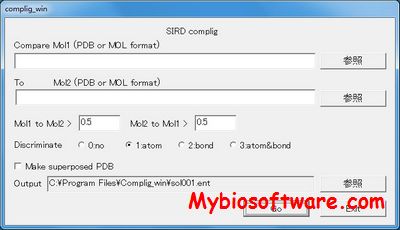LIBRA v1 / LIBRA+ / LIBRAWA
:: DESCRIPTION
LIBRA is based on a graph theory approach to find the largest subset of similar residues between an input protein and a collection of known functional sites.
LIBRA+ is an upgraded version of LIBRA, a tool that, given a protein’s structural model, predicts the presence and identity of active sites and/or ligand binding sites. The algorithm implemented by LIBRA+ is based on a graph theory approach to find the largest subset of similar residues between an input protein and a collection of known functional sites. For this purpose, the algorithm makes use of two predefined databases for active sites and ligand binding sites, respectively derived from the Catalytic Site Atlas and the Protein Data Bank.
LIBRA Web Application is an online portal where users can exploit LIBRA+’s capabilities in recognizing the presence and identity of active sites and/or ligand binding sites given a protein’s structural model. With a free registration, users are given a personal space where they can launch and schedule multiple recognitions, check out the resulting three-dimensional alignments and browse ligand clusters. Results produced in LIBRAWA are backward-compatible with LIBRA+ and can thus be exported in LIBRA+’s format to be accessed offline from the desktop application.
::DEVELOPER
the Theoretical Biology and Bioinformatics Laboratory
:: SCREENSHOTS
N/A
::REQUIREMENTS
:: DOWNLOAD
 LIBRA / LIBRA+
LIBRA / LIBRA+
:: MORE INFORMATION
Citation
Toti D, Viet Hung L, Tortosa V, Brandi V, Polticelli F.
LIBRA-WA: a web application for ligand binding site detection and protein function recognition.
Bioinformatics. 2018 Mar 1;34(5):878-880. doi: 10.1093/bioinformatics/btx715. PMID: 29126218; PMCID: PMC6192203.
LIBRA: LIgand Binding site Recognition Application.
Viet Hung L, Caprari S, Bizai M, Toti D, Polticelli F.
Bioinformatics. 2015 Aug 26. pii: btv489.


